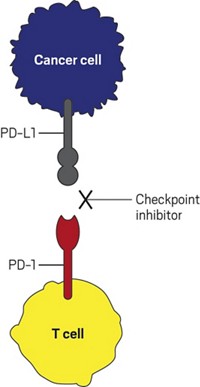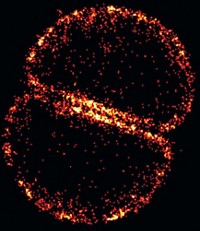Advertisement
Grab your lab coat. Let's get started
Welcome!
Welcome!
Create an account below to get 6 C&EN articles per month, receive newsletters and more - all free.
It seems this is your first time logging in online. Please enter the following information to continue.
As an ACS member you automatically get access to this site. All we need is few more details to create your reading experience.
Not you? Sign in with a different account.
Not you? Sign in with a different account.
ERROR 1
ERROR 1
ERROR 2
ERROR 2
ERROR 2
ERROR 2
ERROR 2
Password and Confirm password must match.
If you have an ACS member number, please enter it here so we can link this account to your membership. (optional)
ERROR 2
ACS values your privacy. By submitting your information, you are gaining access to C&EN and subscribing to our weekly newsletter. We use the information you provide to make your reading experience better, and we will never sell your data to third party members.
Nanomaterials
Spiky particles enhance immune responses in mice
Adding spiky particles to immunotherapy and vaccines could improve their efficacy
by Cici Zhang
November 1, 2018
| A version of this story appeared in
Volume 96, Issue 44

Vaccines and cancer immunotherapies work by activating the immune system with biochemical signals. A new study shows that the immune system can also respond to physical cues such as the texture of injected nanoparticles, potentially opening up new ways to design therapies for cancer and other diseases.
Many pathogens, including the flu virus, have spikelike features on their surface, and scientists have wondered whether their characteristic shapes have a role in triggering the immune system. To test whether physical cues could help activate an immune response, Mei X. Wu of Massachusetts General Hospital and Xi Xie of Sun Yat-Sen University designed an experiment that allowed them to isolate shape-based and biochemical cues.
First, they made two sets of nanoparticles from titanium dioxide, a compound that doesn’t usually trigger the immune system. Some were spiky, some rough. They coated some of them with a lipid found on the surface of some bacterial cells to act as an immune irritant. Then they injected mice with the particles along with a cancer therapy and a flu vaccine. The lipid-coated spiky particles amplified immune responses and boosted the efficacy of cancer immunotherapy and the flu vaccine in mice. Coated rough particles had no significant effect (Nat. Nanotech. 2018, DOI:10.1038/s41565-018-0274-0).
Cells dosed with spiky particles showed evidence of mechanical stress on their membranes, and activation of a signaling pathway known to play a critical role in response to immunotherapies. Researchers suspect that the spikes stress the cell membrane, causing potassium channels in the cells to open and ultimately activating the pathway.
Wu says researchers designing immunotherapies should take advantage of these effects. Therapies combining physical and biochemical cues could produce more robust responses. And they could be approved quickly because the materials used in this study are already in medical use, says John Hayball of the University of South Australia.
Brandon M. Johnson of University of North Carolina, Chapel Hill, who wrote a perspective article about the study (Nat. Nanotech. 2018, DOI:10.1038/s41565-018-0292-y), says it would be interesting to see if the stiffness of the spikes makes a difference and whether other, less rigid materials such as polymers could achieve similar effects.
CORRECTION:
On Nov. 5, 2018, the images of the spiky nanoparticles were updated to include the correct scale bar. The scale bar should read 1 μm rather than 400 mm.





Join the conversation
Contact the reporter
Submit a Letter to the Editor for publication
Engage with us on Twitter